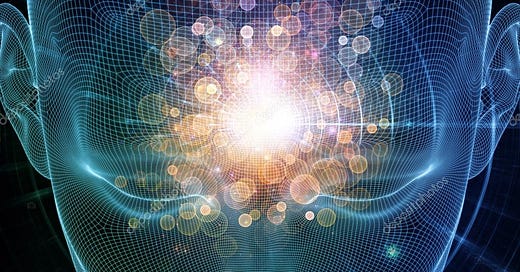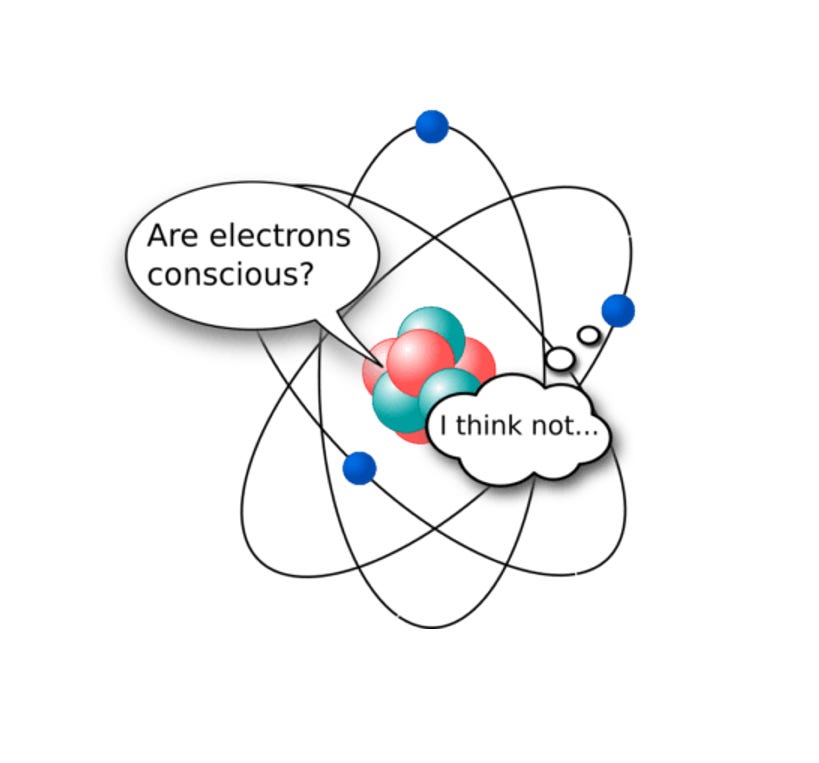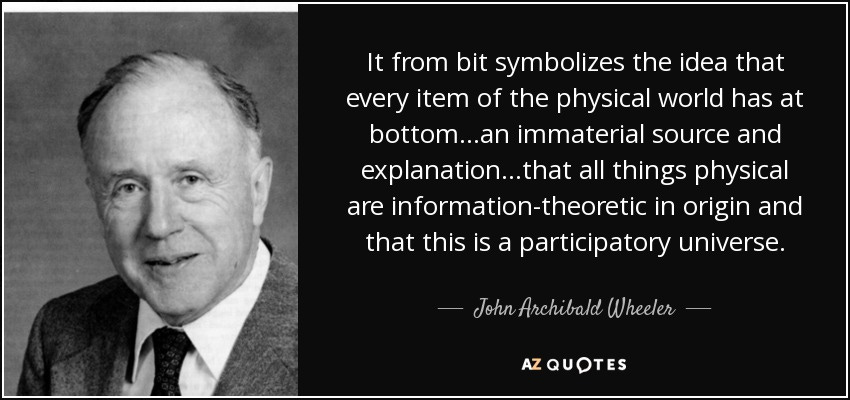Due to the inability of neuroscience, biology, and philosophy to explain the nature and origin of consciousness, the old philosophical doctrine of panpsychism has experienced a resurgence of interest in recent decades.
But what exactly does panpsychism mean? I could direct you to the definitions provided by the Stanford Encyclopedia of Philosophy and conclude this essay with a wish for an enjoyable read.
This is what you need to know about the plethora of definitions and viewpoints on the subject. However, most philosophers of mind primarily adhere to a Western analytic tradition, which often limits their ability or willingness to consider extended perspectives.
I won't delve into a possible East-West synthesis here, as I have already explored it in detail in this ten-post series.
Whereas, I would like to highlight some often-overlooked aspects that can lead to misconceptions and paradoxes. Because I believe that if Western philosophy were to broaden its perspective beyond the analytical, materialistic, and reductionist views, we could achieve a deeper understanding of Nature and ourselves.
The first point is that modern Western philosophy suffers from what I term the ‘mind-consciousness conflation,’ which has led to a complete misunderstanding and distortion of what was once a well-founded metaphysical conjecture. Interestingly, the Western founding fathers of the panpsychist vision of reality were unaffected by this misunderstanding. The fallacy developed later with the crystallization in humankind of what Jean Gebser called the ‘mental structure.’ Allow me to elaborate on this point.
Unfortunately, even among professionals, panpsychism is often understood to mean ‘all is mind.’ Not only is this an inaccurate translation, but it also fosters a misconception by conflating ‘mind,’ ‘consciousness,’ ‘spirit,’ and ‘soul’ as synonymous terms, thus leading to semantic and categorical confusion. It is another one of those cases where Occam’s razor cut too deep, advising us to eliminate every unnecessary hypothesis and avoid multiplying entities. As a result, we are left with a soulless binary world, devoid of color and shades of gray. On this shaky foundation, people construct complicated metaphysical theories and then wonder why paradoxes arise and where they come from. Therefore, let's first obtain some etymological and historical clarification.
The original meaning of the word ‘psychic’ comes from the Greek word ‘psychē’ (ψυχή), which translates to ‘soul’ or ‘spirit.’ It can also signify ‘breath’ or ‘breath of life,’ although the more accurate Greek term for this concept is ‘pneuma’ (πνεύμα), also related to ‘air.’ The etymology of ‘psychē’ traces back to the verb ‘psychō’ (ψύχω), meaning ‘to blow.’ (In modern Greek, it refers primarily to cooling something.) Some suggest it is onomatopoeic—a word that imitates a natural sound. The connection between the soul or spirit and the act of breathing is evident in many other Indo-European languages. For instance, in Sanskrit, ‘atman’ signifies the ‘self’ or ‘soul,’ rooted in ‘atma,’ meaning ‘breath,’ ‘principle of life,’ or ‘essence,’ according to the context. This concept is also reflected in modern German, which retains the root ‘Atem,’ meaning ‘breath.’ Similarly, in Latin, ‘anima,’ a cognate of the Greek ‘anemos’ (άνεμος), meaning ‘wind,’ also translates to ‘soul’—a meaning that modern Italian preserves as ‘anima.’ The Christian tradition also draws parallels between ‘breath’ and ‘soul’: "And the Lord God formed man of the dust of the ground and breathed into his nostrils the breath of life; and man became a living soul" (Genesis 2:7).
Caution is necessary when one is interpreting some contemporary languages that are not Greek. For English speakers, ‘psyche’ can be used in various contexts, often deviating from its original Greek meaning. Since the mid-19th century, the term ‘psychic’ has been used to refer to a person believed to possess occult powers or to act as a medium.
The primary source of confusion in this context is that people use the term ‘psyche’ to refer to the ‘mind,’ ‘intellect,’ or ‘intelligence.’ The Greek word for ‘mind’ is ‘nous’ (νοῦς), which is unrelated to ‘psychē,’ meaning the soul or spirit in both ancient and modern Greek.
Unfortunately, the equation of ‘mind’ (or ‘intelligence,’ ‘reason,’ ‘logical thought’—essentially, the rational and mental faculty) with ‘soul’ has become pervasive, particularly in Western culture. This stems from the modern conflation of mind and consciousness. In the cosmology that I outlined here, mind and consciousness are related and intertwined entities, but their natures are very different, as I have described in detail here. It’s like equating vapor, liquid water, and ice without any distinction. Even professional academic philosophers frequently translate the term ‘panpsychism’ as ‘all is mind-like’ (with ‘pan’ meaning ‘all’ and ‘psyche’ being mistranslated to ‘mind’), rather than correctly translating it as ‘all is soul-endowed’ or ‘all is consciousness.’
The Age of Enlightenment, despite triggering the scientific revolution and enabling us to build better material conditions by technological means, has diminished our inherent ability for spiritual discrimination. Thus, it has led to a blending of concepts. As a result, we tend to mix or make only vague distinctions between 'soul,' 'spirit,' 'consciousness,' 'emotions,' 'feelings,' 'mind,' 'reason,' and other aspects of our inner psychological world.
This isn’t a minor linguistic detail; it represents a significant conceptual distortion introduced by Western analytical philosophers due to their conflation of mind and consciousness. Historically, Italian Renaissance philosopher Francesco Patrizi (1529–1597) introduced the term ‘panpsychism’ (‘pampsychia’) into Western thought in the 16th century. He used the term to emphasize that all things possess a soul or spirit as individual components of a ‘World-Soul.’
Thus, I will use the term ‘panpsychism’ in its original sense. Panpsychism refers to the idea that ‘all is the World-Soul or World-Spirit, animating and permeating the objects and beings of the world.’ This perspective can be described as semi-animistic, with everything regarded as a form of consciousness but not reducible to mind only.
Nowadays, panpsychism has acquired various forms, such as panexperientialism, pancognitivism, constitutive vs. non-constitutive pan/micro-psychism, panprotopsychism, or whatever kind of ‘-ism.’ However, when people refer to it, they typically mean 'micropsychism.' This viewpoint asserts that all matter and its constituent particles possess a form of elementary 'proto-consciousness.' For instance, every elementary particle, such as an electron, is thought to have some degree of basic experience, conscious awareness, primitive perception, or fundamental sensation. The full manifestation of conscious awareness in organisms, including humans, emerges from the combination of these proto-conscious entities into atoms and molecules, ultimately forming complex structures like brains.
On the other extreme is the concept of the universe as a manifestation of universal consciousness, known in contemporary philosophy of mind as ‘cosmopsychism.’ Cosmopsychism can be extended from a pantheistic conception (in which the universe, or Nature, is the one substance, or God) to a panentheistic idea (in which Nature is contained within this universal consciousness or God, but God encompasses more than Nature). In this view, the entire cosmos represents ‘psyche’—a form of universal consciousness analogous to what the Indian Vedic tradition identifies as Brahman or the Absolute.
Micropsychism presents a reductionist perspective on the origin and nature of consciousness, positing that individual consciousness arises from the combination of proto-conscious particles through a bottom-up process. In contrast, cosmopsychism adopts a universal and holistic top-down approach, suggesting that each individual is an individuation or 'de-combination' of the universal soul. Despite their differences, both viewpoints agree that consciousness is the fundamental primitive of existence. Rather than emerging from the complex interactions of unconscious material particles and neurons in the brain, consciousness is already present as an intrinsic quality of all there is.
The distinction between micropsychism and cosmopsychism is frequently viewed as an irreconcilable dichotomy. Because micropsychism and theories of universal consciousness suffer from the infamous ‘combination problem’ or ‘decombination problem,’ respectively. If even elementary particles have experiences, as micropsychism contends, how could these microscopic subjects combine to constitute a macroscopic subject? On the other hand, in an ontology of universal consciousness, the opposite issue arises. Namely, how did a cosmic One-Consciousness become a multifold polarity manifesting itself as an extremely fragmented and particularized cosmos, with material objects made of atoms, molecules and particles, and the appearance in the evolutionary process of an individuation of consciousness–that is, minds and bodies? Or, rephrasing this in terms of the decombination problem, how can the one Subject become many subjects with its own distinctive self, yet retain its own subjectivity?
Various solutions have been proposed but, generally, this issue compels people to choose one perspective over the other. It highlights the inherent challenge of the human intellect, which often struggles to move beyond a binary view that demands definitive 'yes' or 'no' answers.
However, instead of viewing cosmopsychism and micropsychism as mutually exclusive, we can consider them complementary. If we envision the One becoming the many and acting in and through them, the apparent dichotomy disappears. The consciousness of the singular World-Soul expresses itself in the plurality of the individuals, and the individual’s cells, molecules, and particles. The electron isn’t an isolated little proto-consciousness randomly zigzagging around, as the conventional micropsychist views it. Rather, it is a self-concentration of the universal consciousness in itself and, thereby, reflects or ‘funnels through’ a somnambulant version of it in a limited materiality. This concept is similar to John Wheeler's idea of "it from bit," where universal consciousness reflects on itself within a participatory universe.
Not only is the physical universe that science describes a manifestation of a universal consciousness, but every event, every phenomenon, and all microscopic processes are expressions of that cosmic consciousness. It is a Consciousness that is both global and local, working as a whole and yet locally intervening in each part of itself, determining the macrocosm, and, simultaneously, instantly determining and working out all the processes in the microcosm. I have examined this standpoint from the perspective of modern quantum physics in more detail in here and here.
An aspect that might be worth noting is that this consciousness is not a Mind in itself, but it acts, works, and organizes the cosmos through a universal Mind or a Mind at large in and through every bit of its own creation as well. Here, we get the best view of the relationship between mind and consciousness. Universal consciousness is a transcendent and immutable entity that exists beyond matter, forces, spacetime, and mind. In contrast, the universal Mind is a ‘delegate’ within the spatio-temporal realm, functioning through dynamic self-concentrations. This is mirrored in our individual experience of mental activity, characterized by fleeting thoughts that are sustained by a constant conscious awareness of a witness-identity.
In summary, the kind of panpsychism adopted here is an integral vision in which micropsychism and cosmopsychism are not mutually exclusive but, rather, are two complementary aspects of the same universal consciousness. Only when we see them as irreconcilable views of reality do paradoxes arise.
This was only a superficial review, as I didn’t go into the many other panpsychist theoretical frameworks in the literature. The key point I want to make is that the distinction between micropsychism and cosmopsychism is not irreconcilable and, most importantly, that when we draw such clear-cut distinctions, it often stems from assumptions that categorize the world in black and white. We can do better.
The subscription to Letters for a Post-Material Future is free. However, if you find value in my project and wish to support it, you can make a small financial contribution by buying me one or more coffees! You can also support my work by sharing this article with a friend or on your sites. Thank you in advance!








Curious to get your thoughts on how panpsychists argue for or against machine consciousness. My intuition tells me that the mechanistic nature of digital computers excludes panpsychists explanations of their sentience, but the argument is hard to nail down since panpsychism seems to be missing clear agreed upon axioms that would allow us to reason about it.
There is a straightforward rejection of micropanpsychism, which mirrors the arguments against materialism, but the cosmopanpsychist case is more difficult. There are no clear mechanisms for dissociation, so adherents seem to be free to assign sentience to any object they chose to. Then we’re back to unresolvable metaphysical arguments.
Beautiful piece! Reminds me of the Vedic concept of Lila, the divine play of consciousness, playing hide and seek with itself, fragmenting into countless forms to experience itself, until it remembers that it has always been one.